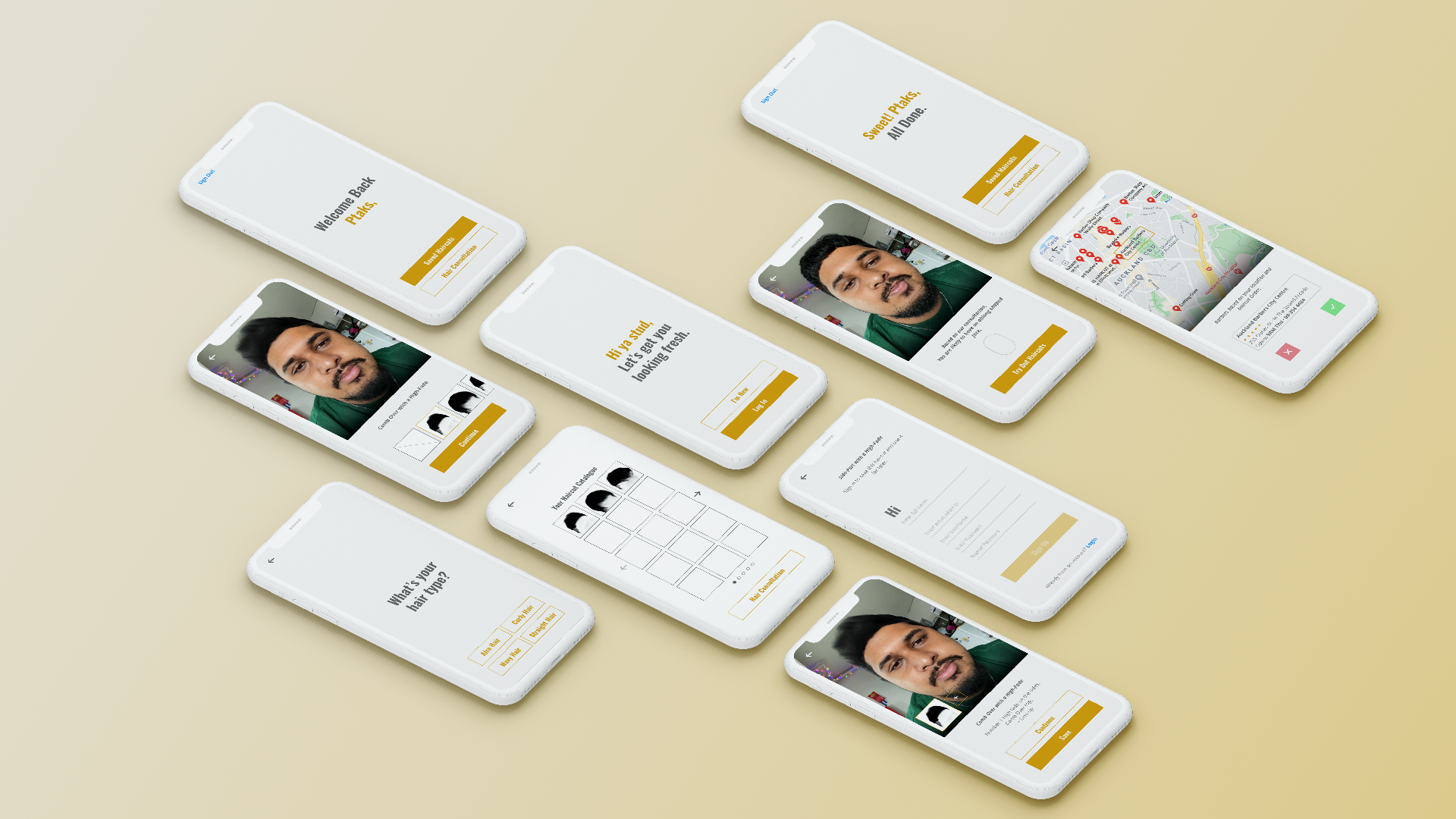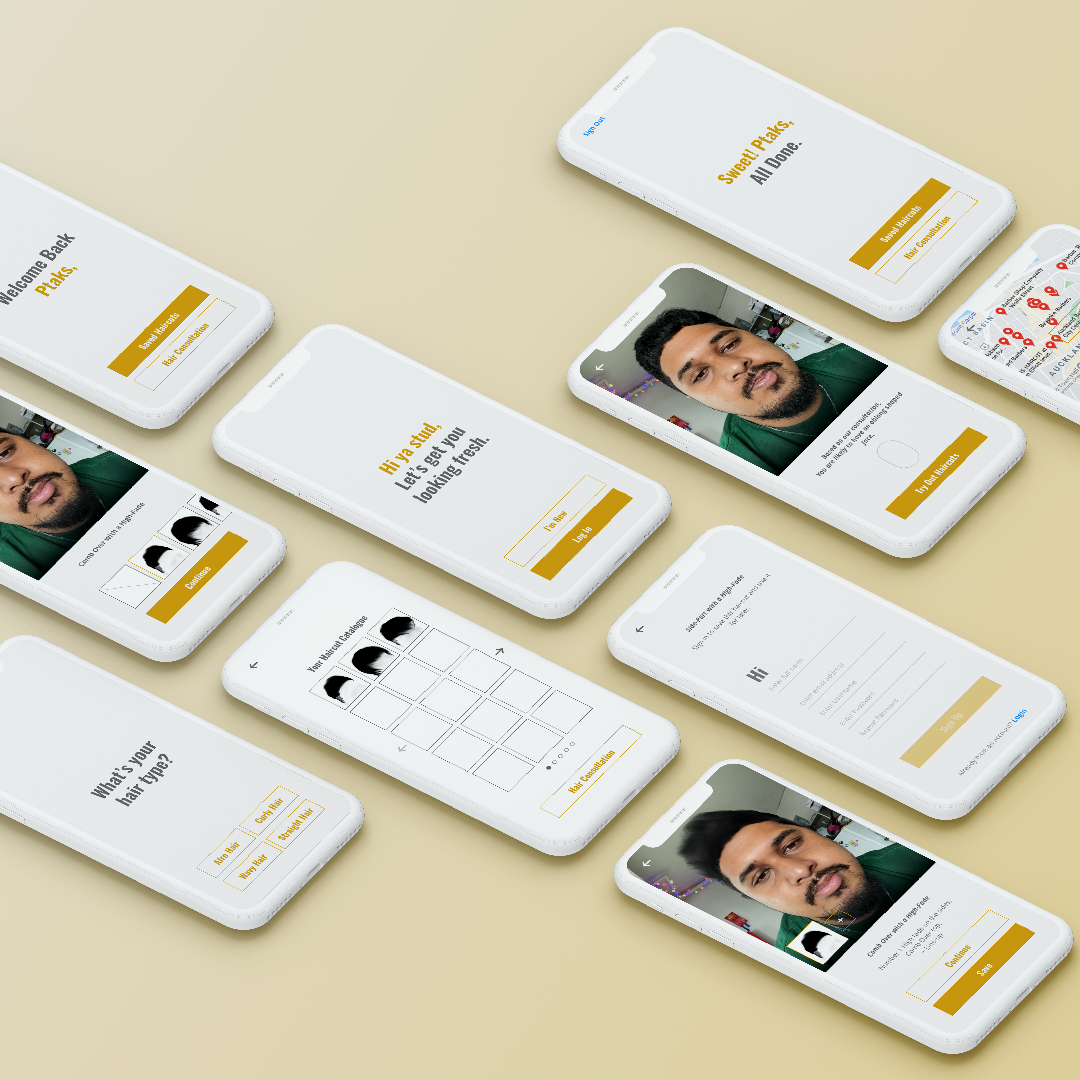
The Digital Solution to Haircut Dissatisfaction
SKUX aims to help users virtually try out various haircuts in real-time so that they don’t need to wait for their hair to grow back and try another haircut.
The app would determine the user’s facial shape to recommend the best haircuts for the user to try out through augmented reality. When the users confirm the haircut by capturing themselves with their haircut of desire, a haircut summary comprised of barber terminology and a snapshot of the augmented selfie is attached to provide the barber a visual and verbal understanding of what their clients want.
Haircut Dissatisfaction is due to a miscommunication between the client and the barber.
"HMW Support a client to use both Images + Words to more accurately communicate their haircut expectations so that they do end up with a haircut that meets their needs."
Haircut dissatisfaction has been a personal problem of mine, I recall many moments in my life where I was dissatisfied with my haircuts. This passion for achieving better haircut results was the reason why I chose haircut dissatisfaction as my research topic and issue to solve. The issue of haircut dissatisfaction is significant due to hair playing an important role in self-expression, fashion and social identity. Participants have haircuts to look fresh, increase confidence and appear professional.
Current solutions include using image references and having proficient knowledge of barbershop terminologies.
The stakeholders I have identified were barbershop clients, barbers and business owners. I had decided to narrow down my target audience to barbershop clients instead of including hairdresser clients because of their different needs. Another reason was that barbershop clients would go to get their haircuts more frequently than hair salon clients, according to my user interviews. As the designer, it was important to not spread myself too thin trying to cater to multiple audiences.
The exploratory methods that I used were conducting user interviews and exploring secondary sources through online research.
One key insight I have identified was using visual references and specific haircut terminologies were common hacks to communicate to the barber. Haircut Dissatisfaction was due to a miscommunication between the client and the barber. Using imagery knowing how to use barbershop terminologies were common methods to communicate to the barber. Having visual communication helped one participant feel more comfortable and relaxed knowing that there is a clear visual understanding between the client and the barber. 40% of the participants also have knowledge of barbershop terminologies to help them get what they want from a haircut.
Another insight I have identified was that the understanding of the client’s facial shape could help them with getting a more satisfactory haircut. This was because the haircuts that complimented the shape of the client’s face were the most appealing ones.
After gathering my insights from my exploratory research, a voting session was done to see the most favourable ideas for the digital solution. The idea that stood out was the ‘AR wigs’ idea which the user to take a selfie and then customise their hair options. I knew that there were apps like Snapchat that apply augmented reality to project objects to the user’s face. I thought that maybe this existing implementation of AR could be used to solve the issue of haircut dissatisfaction.
The App’s copy and name were based on the vernacular of my interviewees. I looked at the way the participants spoke and then tried to implement that on my prototype.
SKUX features facial recognition technology to scan and determine the user's facial shape in order to find the optimal haircuts based on their face shape. The users can use SKUX's Augmented reality feature to virtually try on a variety of haircuts. Once done, the users can save a snapshot of the augmented selfie of their chosen haircut with a haircut summary attached. This data can then be sent to local barbers when booking for a haircut through the app's booking feature.
The overall design style that I have used was flat design because I appreciate simplicity. I wanted the experience to be straight forward and optimal. I used different type size and styles to indicate hierarchy. Big texts indicated the heading whereas the smaller text was used as normal text. I used bold styles to indicate importance and emphasis. I considered ergonomics, as placed elements like buttons on the bottom half of the screen canvas so that the thumbs can reach them easily. Colour saturation was used to indicate active and inactive components. I desaturated elements that are inactive and used colours for active elements because colours stimulate attention.
A business opportunity that I discovered was that the app can cut out the waiting process at the barbershop. This was because users can book a haircut appointment with their haircut preference attached to it.
App Demo here



